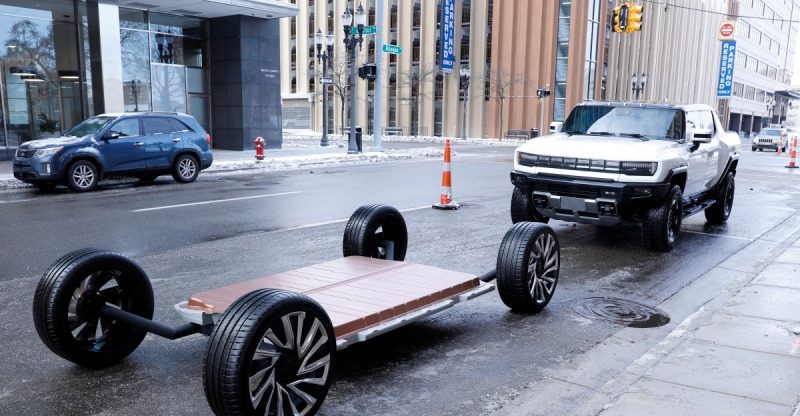
General Motors is making waves in the electric vehicle (EV) industry with its announcement of a new battery chemistry poised to revolutionize driving range. Partnering with LG, GM is developing lithium manganese-rich (LMR) prismatic cells, promising a significant leap forward in both performance and affordability.
This innovative battery technology boasts enhanced safety features and a higher energy density compared to current EV batteries. The increased energy density, coupled with the space-efficient prismatic cell design, is expected to deliver an impressive 400-mile range – a considerable upgrade from the current 300-320 mile range offered in GM’s existing electric vehicles.
The move to LMR batteries is a strategic one, driven by the high cost and ethical concerns surrounding cobalt, a key component in traditional nickel-cobalt-manganese (NCM) cathodes. Cobalt mining practices have been widely criticized for human rights violations, prompting automakers to seek alternatives. Manganese, a more abundant and affordable material, forms the backbone of the LMR cells, making them a significantly more cost-effective option.
GM’s commitment to LMR technology is substantial, with approximately 300 full-size prototype cells already produced. The company anticipates commercial production in the US by 2028, beating out competitors like Ford who have announced similar plans for 2030. This ambitious timeline underscores GM’s confidence in the technology and its potential to disrupt the EV market.
Beyond the extended range, the LMR battery’s simplified design promises to reduce manufacturing complexity and costs. This cost reduction is crucial for driving down the overall price of EVs, a key factor in accelerating mass adoption. GM’s VP for batteries, Kurt Kelty, highlights the significance of this cost reduction, emphasizing that batteries account for a substantial portion (30-40 percent) of a vehicle’s cost. Lower battery costs translate directly to lower consumer prices, making EVs more accessible to a broader range of buyers.
While mass production of LMR batteries presents challenges – including the potential for capacity loss and thermal stability degradation – GM assures that it has addressed these concerns through innovative production processes. The company’s engineers are confident that the LMR batteries will perform comparably to their high-nickel counterparts, even in extreme temperature conditions.
This development also aligns with GM’s strategy to localize its battery supply chain, reducing reliance on imports from China, the world’s leading EV battery producer. The increased use of domestically sourced manganese will strengthen the resilience of the US EV industry and reduce vulnerability to global supply chain disruptions.
GM’s ambitious foray into LMR battery technology represents a significant step towards a more sustainable and affordable future for electric vehicles. The potential for a 400-mile range, coupled with cost reductions, could be a game-changer, propelling the mass adoption of EVs and solidifying GM’s position as a leader in the industry.









